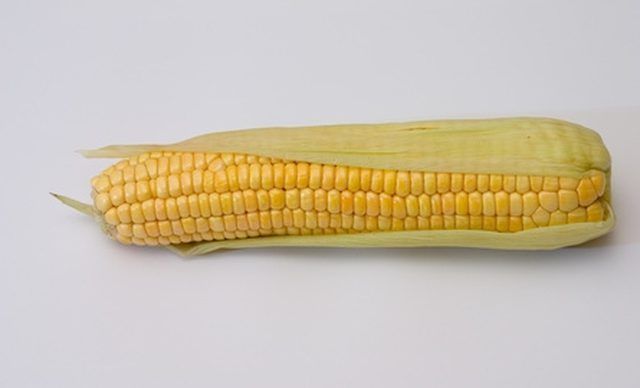Bulbs
Flower Basics
Flower Beds & Specialty Gardens
Flower Garden
Garden Furniture
Garden Gnomes
Garden Seeds
Garden Sheds
Garden Statues
Garden Tools & Supplies
Gardening Basics
Green & Organic
Groundcovers & Vines
Growing Annuals
Growing Basil
Growing Beans
Growing Berries
Growing Blueberries
Growing Cactus
Growing Corn
Growing Cotton
Growing Edibles
Growing Flowers
Growing Garlic
Growing Grapes
Growing Grass
Growing Herbs
Growing Jasmine
Growing Mint
Growing Mushrooms
Orchids
Growing Peanuts
Growing Perennials
Growing Plants
Growing Rosemary
Growing Roses
Growing Strawberries
Growing Sunflowers
Growing Thyme
Growing Tomatoes
Growing Tulips
Growing Vegetables
Herb Basics
Herb Garden
Indoor Growing
Landscaping Basics
Landscaping Patios
Landscaping Plants
Landscaping Shrubs
Landscaping Trees
Landscaping Walks & Pathways
Lawn Basics
Lawn Maintenance
Lawn Mowers
Lawn Ornaments
Lawn Planting
Lawn Tools
Outdoor Growing
Overall Landscape Planning
Pests, Weeds & Problems
Plant Basics
Rock Garden
Rose Garden
Shrubs
Soil
Specialty Gardens
Trees
Vegetable Garden
Yard Maintenance
The History of Hybrid Seed Corn
The History of Hybrid Seed Corn. Corn is native to the Americas. The Aztec, Inca and Mayan civilizations grew corn more than 5,500 years ago, and North American tribes grew the crop hundreds of years before the first Europeans arrived. Explorers Lewis and Clark survived the winter of 1804 to 1805 thanks in part to corn supplied by Native Americans....

Corn is native to the Americas. The Aztec, Inca and Mayan civilizations grew corn more than 5,500 years ago, and North American tribes grew the crop hundreds of years before the first Europeans arrived. Explorers Lewis and Clark survived the winter of 1804 to 1805 thanks in part to corn supplied by Native Americans. Corn is now an essential food crop in North America and a major export.
Beginnings
Native Americans showed European settlers how to grow and "breed" corn: how to choose the best crop specimens, save seed and allow the corn to be pollinated by the wind, once planted. Seed was improved by this purposeful selection, but pollination could not be controlled. Farmers continued using this method to improve corn vitality until the early to middle 20th century.
Trial
Scientific development of hybrid corn grew out of the work of Gregor Mendel in the 1860s. Government experimentation in corn hybridization began in the 1920s. In the following half century, three stages of hybrid development occurred: open pollination, inbreeding (transferring pollen from an individual plant to the silks of the same plant) and cross breeding (crossing selected parent plants). Single crosses are produced by crossing two inbred lines. Double crosses are produced by crossing two different single crosses.
Breakthroughs
Double- and single-cross methods produced the greatest results. Farmers began to plant hybrid seeds under the stressful conditions of drought in the 1930s. The first commercial hybrid, called Copper Cross, was produced in 1923. With it, Henry A. Wallace started Hi-Bred Corn Company, which became Pioneer Hi-Bred. By the 1930s, Wallace and a few competitors began to sell hybrid corn varieties to farmers. The hybrids proved more vigorous, withstanding harsh weather and deflecting diseases and pests better than non-hybrid brands. Farmers were able to produce more corn per acre with these vigorous hybrids.
Acceptance
In 1934 less than one half of one percent of U.S. land planted in corn was planted in hybrid seed. Ten years later, that number had risen to 59 percent. In the "corn belt" of the Midwestern United States and Canada, the percentage was a staggering 90 percent. By 1956, virtually all corn planted in the United States was hybrid corn, and for the past 50 years, with rare exception, all of the field corn in the U.S. and Canada has been hybrid. The switch to hybrids has increased corn yield by an average of 20 percent.
Resistance
Late in the 20th century, biotechnology corporations such as Monsanto, Upjohn, Lubrizo and Celanese bought major hybrid seed research and production companies, such as Joseph Harris Seed (Celanese) and Jacob Hartz Seed (Monsanto). They began to experiment with genetic modification of plants to increase plant vigor. But they met with passionate resistance from consumer and environmental groups, which questioned the safety of genetically modified seed. The European Union placed a moratorium on imported bioengineered crops in 2002. Proponents of organic and more traditional forms of seed hybridization and seed-keeping formed organizations such as Saving Our Seed to perpetuate seeds that are regionally adapted, open-pollinated and certified organic in hopes of keeping more traditional seeds available for planting.